Behind Failure: A Brief History of Anti-Aging
Despite the fact that there is still no consensus about what aging is a program or an accident, almost all gerontologists agree on one thing: aging is a disease for all clinical signs, which causes the vast majority of the world's population to die. We must, and, most importantly, can fight it, if we want to prolong the period of a healthy human life, defeat age-related diseases and, in the long run, get rid of the need to die. So, for me, it doesn’t matter at all from which side the scientists approach the solution of this issue - “software” or “random”. Just to decide.
That aging will eventually be defeated, I have no doubt. If only because the scientific and technical progress from year to year is only gaining momentum: for example, just a few years ago, epigenetic manipulations or technologies like CRISPR seemed fantastic. By the way, CRISPR so inspired the famous Harvard geneticist George Church, that he predicted the defeat of aging for 10 years. And even though it’s hard for me to share such an optimism of a great scientist, the likelihood that at least 50 years later the therapy for stopping aging will be developed is very high. Moreover, I think that it is possible to implement this for 15-20 years, if, of course, the number of studies in this area is significantly expanded.
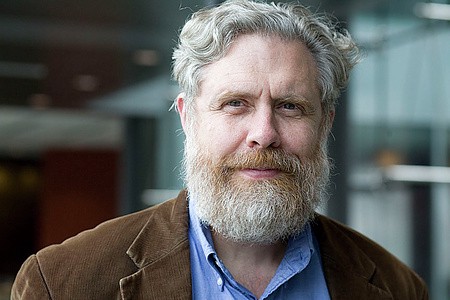
George Church
Well, okay, let's go down from heaven to earth and take a look at science (and investors) path. This path is completely unhappy - the dead with braids are on either side of it.
If we talk about public funding, the situation, to put it mildly, is not very encouraging. Aging is not even officially recognized as a disease at the WHO level, so much less is spent on research into its fundamental mechanisms than on studying its “derivatives” - age-related diseases like cancer and Alzheimer's.
This is how things stand in the three leading international organizations that deal with the problems of aging. The Buck Institute for Research on Aging, for example, lives on a budget of $ 40 million a year, the Salk Institute (Salk Institute) spends a little more - $ 110 million. The National Institute on Aging, a division of the American National Institutes of Health, which is intended to study the problems of aging, at first glance spends a much more impressive amount of 1.4 billion dollars a year, but at a second glance it turns out that its main part is aimed at studying the disease Alzheimer's and the development of effective therapy against it, and not against the root cause - the aging itself.
Private investors are also not in a hurry to help in the battle with the " dragon-tyrant ": a series of failures in the anti-aging market has led to the fact that investments in this area are more like charity, and few expect to meet their "unicorn" here. At best, research ended with the completion of dietary supplements in the ranks, at worst - the closure of the most promising projects.
The best geroprotectors developed over the last 40–50 years have been able to increase the lifespan of some model organisms (worms, mice) by only 20% -30%. The results are hardly outstanding, especially considering that calorie restriction in the same mice or rats prolonged life by 40% -50%, but it turned out to be practically ineffective in primates. That is, for people, there is nothing at all that is guaranteed to extend life not that by 40%, but by at least 15%.
At the same time, even in mice, no geroprotectors have so far been able to show better efficiency than calorie restriction: neither metformin , nor rapamycin , nor thymus (thymus) transplant, which is responsible for the functioning of the immune system. No significant synergy from the simultaneous use of several geroprotectors at once was found - for example, the combination of meformin and rapamycin could not reach even up to 25% of the life expectancy extension. Other approaches have also shown doubtful efficacy — for example, modulation of the Wnt signaling pathway or blood transfusion of young donors .
And this is not to mention the other, no less impressive disappointments.
In 2015, almost the whole world was discussing a bold experiment that Elizabeth Perrish, CEO of BioViva, put on herself: an American decided to try gene therapy to prevent telomere shortening, one of the cellular mechanisms of aging . I already wrote about this experiment in more detail here .
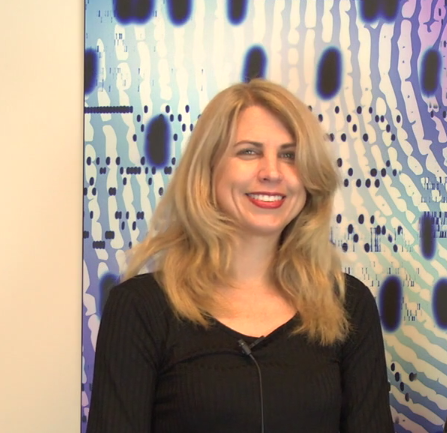
Elizabeth Perrish
She was inspired to such a risky step by the results that Maria Blasco’s group from the Spanish National Cancer Research Center (Centro Nacional de Investigaciones Oncologicas, CNIO) managed to get : the telomerase gene therapy could increase both the average and maximum lifespan of mice, only 24%.

Maria Blasco
Other gerontologists, for example, Bill Andrews (William Andrews), the founder of Sierra Sciences (whose team identified, by the way, the human telomerase gene) and Michael B. Fossel, professor of clinical medicine at the University, pinned their hopes on the rejuvenating potential. Michigan State (Michigan State University).
Unfortunately, it was not possible to achieve more impressive results from telomerase, and its popularity soon faded away. Perrish’s experiment was taken quite skeptically and did not help the “telomerase approach” to establish itself in the market. It is possible that in a few years its results will be more obvious and will “resurrect” telomerase, but, apparently, investors do not count on it. This, by the way, is evidenced by the words of Michael Fossel himself, who unsuccessfully tries to raise funds to study the potential of telomerase in the fight against Alzheimer's disease.
David Sinclair, a professor at Harvard Medical School and one of the veterans of anti-aging, is trying to replace telomerase in the market. He relied on the good old nicotinamide, the precursor of the enzyme NAD + (Nicotinamide adenine dinucleotide, nicotinamide-adenine dinucleotide) and recently published the results of his latest work.
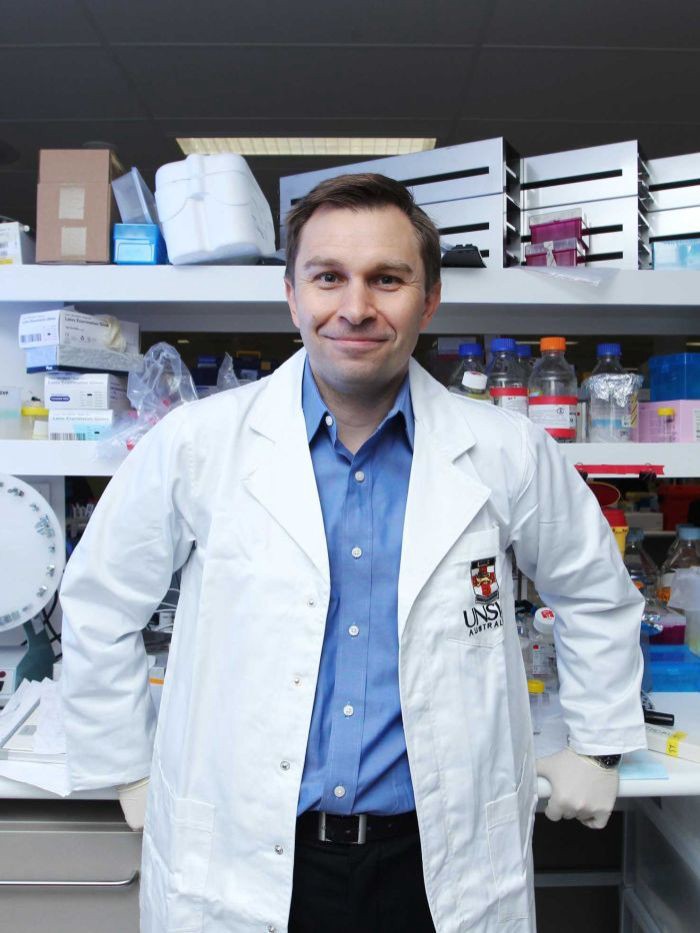
David sinclair
It is difficult to call Sinclair a pioneer in this area: nicotinic acid has been known to gerontologists for centuries, and nicotinamide (still in the form of riboside) interested the scientific community about 5 or 6 years ago. Miraculous properties in it were first discovered by ChromaDex, which eventually brought the NIAGEN dietary supplement (in the form of nicotinamide riboside) to the market, and then Elysium Health, a startup from Boston, notable for the fact that its founder, Leonard Guarente, recruited six Nobel laureates . However, this did not make any impression on mice or worms - NR (nicotinamide riboside) extended their life by only a few percent and a drug based on it called “Basis” added to the list of dietary supplements.
Sinclair’s latest work, connected with the same nicotinamide (already in the form of a mononucleotide, NMN), unexpectedly provoked a violent reaction: the media wrote about a “huge jump in the fight against aging” and even suggested that the new drug would help astronauts to maintain health during future flight to mars. The scientist himself noted that the entire week of therapy was enough to prevent the cells of old mice from being distinguished from the cells of young individuals — NMN recovered DNA after damage so well. By the end of this year, the “pill of old age” is to confirm its effectiveness and safety in humans - the tests will be held at the Birgam Women's Hospital in the USA (Brigham and Women's Hospital, Boston, USA).
Of course, I really want to believe a respected specialist, but it is rather difficult to get rid of doubts about the miraculousness of nicotinamide. It is not only the “market history” of this precursor NAD + that is hindering this, but also the story of Sinclair himself, who several years ago already reported on an equally impressive breakthrough.
The previous brainchild of Sinclair, resveratrol, showed excellent results during animal experiments: not only suppressed inflammation and helped to cope with oncological processes, but also increased the lifespan of model organisms. Bolshaya Pharma believed in the discovery: GlaxoSmithKline (GSK) bought the rights from Sinclair and Co. for $ 720 million and spent several more years and a lot of money to study the molecule. Alas, Glaxo never found evidence of the effectiveness of resveratrol in humans, although she tried twice ( 1 , 2 ). As a result, in 2013 the project was closed .
Will Sinclair again convince investors of the viability of the developed technology? Hardly. So far, the NMN story makes us feel like a deja vu and reminds us, on the one hand, of the failure of resveratrol, and on the other hand, of many other dietary supplements that feel great in the market, but cannot provide a radical extension of life.
The title of the most commercially attractive means of extending life today, which has removed telomerase from the “throne” and is unlikely to let Sinclair with nicotinamide approach it, is senolithics - that is, drugs that fight with senescent cells. This is evidenced, for example, by the success of the startup Unity Biotechnology, in which such large investors as PayPal founder Peter Thiel and Amazon’s head Jeff Bezos believed and invested $ 116 million.
A feature of the senescent cells is that, without already performing their direct functions, they do not performhara-kiri apoptosis, but begin to produce many signaling factors that trigger inflammatory processes in the body. Therapy for their removal was able to extend the life of mice by 25% . So far, the Unity Biotechnology team is primarily aimed at combating atherosclerosis, but in theory the potential of senolithic can also be used to combat other diseases that are somehow related to the aging process.
Will the senolithics repeat the fate of telomerase / nicotinamide and other means to radically prolong life? It is still difficult to say unequivocally, however, by indirect evidence, the answer to this question will most likely be positive.
First, one of the most successful Russian biologists abroad, Andrei Gudkov, who is also involved in the study of senescent cells, recently presented new (and very revolutionary!) Data on this subject, which can be read here , and, apparently, believes that we need to look for tools to influence other mechanisms of aging, if we want to achieve a significant increase in life expectancy.
Secondly, the fact that the senolithic is not a panacea for old age makes you think about the steps that the head of Unity Biotechnology, Ned David, has taken. He has repeatedly met with my beloved Belmonte (Juan Carlos Izpisua Belmonte), which offers a completely different way of dealing with age-related degradation of the body. Perhaps Ned already wants to turn off the unpromising "sense path"? But first things first.
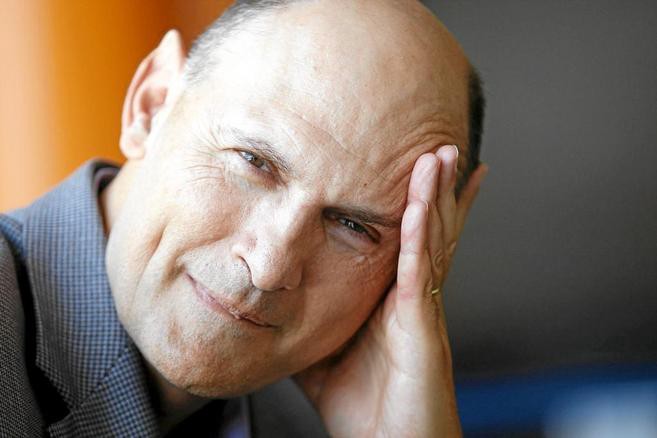
Juan Carlos Ispisua Belmonte
If we consider the aging process as an accident and a consequence of the imperfections of our body, which accumulates breakdowns with age, then the struggle with senescent cells, short telomeres and its other symptoms looks quite logical. However, the failures that time after time comprehend researchers and, most likely, will not bypass the most attractive investment approach for today - Senolitik - suggests that perhaps the time has come to pay close attention to the alternative hypothesis, which can, will allow to break the desired "jackpot" and find an effective therapy of aging.
This is, of course, the assumption that aging is a program that is embedded in our genes and with the onset of puberty slowly but inevitably leads us to death. This, in my opinion, partly explains the failures in the market: how to slow down the evolutionary program of suicide inherent in us, affecting one part of it? If we agree that aging is programmed, another question naturally arises: is there a vulnerability in this program that will allow us to slow it down or disable it altogether?
The hope that such an opportunity exists is presented to us in 2006 by Shinya Yamanaka, a professor at the Institute of Advanced Medical Sciences at Kyoto University. The Japanese scientist managed to come close to solving the secret of eternal youth, which nature possesses: we are talking about her ability to reset the age of cells, which she uses for each embryo - after all, he begins his way from the egg, which is the same age as his mother. Yamanaka learned to transform any adult cell of the body into a stem, or pluripotent, through the co-expression of four transcription factors of the Oct4, Sox2, Klf4 and c-Myc genes (OSKM - “Yamanaki factors”). This breakthrough, by the way, in 2012 brought the Japanese Nobel Prize and marked the beginning of a new round of research on the aging process.
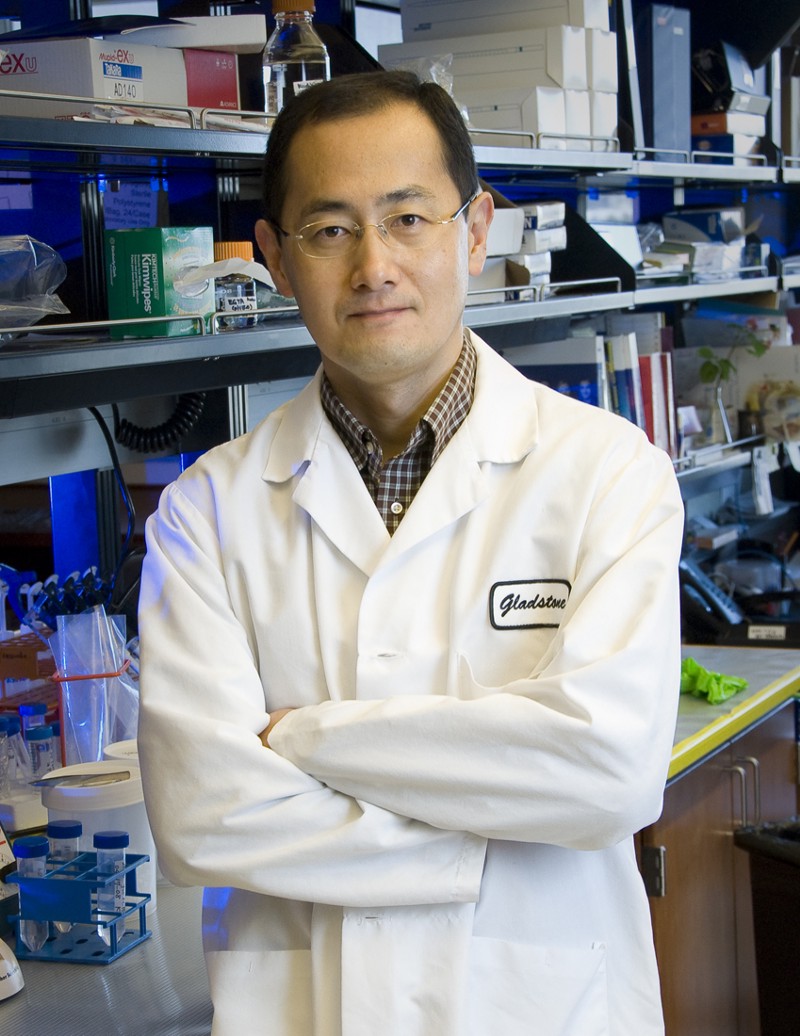
Shinya Yamanaka
For a long time there was no unequivocal understanding of whether the process of “dedifferentiation” —that is, the reverse transformation of a cell into a pluripotent one with the help of “Yamanka factors” —sharp or gradual. However, last December, a team from the Salk Institute under the leadership of the aforementioned Juan Carlos Ispisua Belmonte showed that, to our great happiness, this process of epigenetic recoil is quite gradual: by choosing a certain dosage of the “genetic cocktail”, you can save the cell phenotype, only slightly “ rolling back her age.
As a result of their manipulations, the lifespan of experimental mice increased by 33% -50% depending on the control group, and most importantly, they observed a decrease in many key markers of aging - including senescent cells, DNA breaks, markers of inflammation, free radicals, etc. P. Moreover, in mice treated with therapy, telomeres were lengthened. That is, the Belmonte group observed exactly the effects that I would have expected to see with aging programmed. Read more about this work here . In addition, the results of Belmonte were confirmed in an independent study conducted by Maria Blasco who switched from telomerase to “Yamanaki factors”.
Despite the fact that the experiments were carried out on specially bred fast-growing mice and the confirmation of the results on ordinary animals is still to come, this discovery has already inspired optimism in the fighters with aging. The success of the Salk Institute group was recognized even by their “competitor” David Sinclair, but I already mentioned about the head of Unity Biotechnology and his meetings with the great Spaniard. And about the “great” I speak without any irony: if the results of Belmonte are confirmed on ordinary mice, the Nobel Prize is guaranteed to him.
Of course, the technology has not yet been honed: specialists will have to find the most appropriate proportions of the “Yamanaki cocktail”, timing, the optimal way to deliver these genes to an already adult organism, to protect themselves from the occurrence of teratomas (cancerous tumors) and much, much more. However, in my opinion, the most important step has already been taken - one of the potential mechanisms of radical rejuvenation has been found, and all other difficulties no longer seem insurmountable.
It remains to hope that investors will not pass by the breakthrough of the Belmonte group - perhaps it is the technology of epigenetic recoil that will ensure the appearance on the market of a truly effective means for defeating aging. After all, if investors believed in senolithic, then why should they remain indifferent to a much more promising approach?

The last aging man (frame from the k / f Mr. Nobody )
That aging will eventually be defeated, I have no doubt. If only because the scientific and technical progress from year to year is only gaining momentum: for example, just a few years ago, epigenetic manipulations or technologies like CRISPR seemed fantastic. By the way, CRISPR so inspired the famous Harvard geneticist George Church, that he predicted the defeat of aging for 10 years. And even though it’s hard for me to share such an optimism of a great scientist, the likelihood that at least 50 years later the therapy for stopping aging will be developed is very high. Moreover, I think that it is possible to implement this for 15-20 years, if, of course, the number of studies in this area is significantly expanded.

George Church
Well, okay, let's go down from heaven to earth and take a look at science (and investors) path. This path is completely unhappy - the dead with braids are on either side of it.
Where does the money go
If we talk about public funding, the situation, to put it mildly, is not very encouraging. Aging is not even officially recognized as a disease at the WHO level, so much less is spent on research into its fundamental mechanisms than on studying its “derivatives” - age-related diseases like cancer and Alzheimer's.
This is how things stand in the three leading international organizations that deal with the problems of aging. The Buck Institute for Research on Aging, for example, lives on a budget of $ 40 million a year, the Salk Institute (Salk Institute) spends a little more - $ 110 million. The National Institute on Aging, a division of the American National Institutes of Health, which is intended to study the problems of aging, at first glance spends a much more impressive amount of 1.4 billion dollars a year, but at a second glance it turns out that its main part is aimed at studying the disease Alzheimer's and the development of effective therapy against it, and not against the root cause - the aging itself.
Private investors are also not in a hurry to help in the battle with the " dragon-tyrant ": a series of failures in the anti-aging market has led to the fact that investments in this area are more like charity, and few expect to meet their "unicorn" here. At best, research ended with the completion of dietary supplements in the ranks, at worst - the closure of the most promising projects.
The best geroprotectors developed over the last 40–50 years have been able to increase the lifespan of some model organisms (worms, mice) by only 20% -30%. The results are hardly outstanding, especially considering that calorie restriction in the same mice or rats prolonged life by 40% -50%, but it turned out to be practically ineffective in primates. That is, for people, there is nothing at all that is guaranteed to extend life not that by 40%, but by at least 15%.
At the same time, even in mice, no geroprotectors have so far been able to show better efficiency than calorie restriction: neither metformin , nor rapamycin , nor thymus (thymus) transplant, which is responsible for the functioning of the immune system. No significant synergy from the simultaneous use of several geroprotectors at once was found - for example, the combination of meformin and rapamycin could not reach even up to 25% of the life expectancy extension. Other approaches have also shown doubtful efficacy — for example, modulation of the Wnt signaling pathway or blood transfusion of young donors .
And this is not to mention the other, no less impressive disappointments.
Telomerase
In 2015, almost the whole world was discussing a bold experiment that Elizabeth Perrish, CEO of BioViva, put on herself: an American decided to try gene therapy to prevent telomere shortening, one of the cellular mechanisms of aging . I already wrote about this experiment in more detail here .

Elizabeth Perrish
She was inspired to such a risky step by the results that Maria Blasco’s group from the Spanish National Cancer Research Center (Centro Nacional de Investigaciones Oncologicas, CNIO) managed to get : the telomerase gene therapy could increase both the average and maximum lifespan of mice, only 24%.

Maria Blasco
Other gerontologists, for example, Bill Andrews (William Andrews), the founder of Sierra Sciences (whose team identified, by the way, the human telomerase gene) and Michael B. Fossel, professor of clinical medicine at the University, pinned their hopes on the rejuvenating potential. Michigan State (Michigan State University).
Unfortunately, it was not possible to achieve more impressive results from telomerase, and its popularity soon faded away. Perrish’s experiment was taken quite skeptically and did not help the “telomerase approach” to establish itself in the market. It is possible that in a few years its results will be more obvious and will “resurrect” telomerase, but, apparently, investors do not count on it. This, by the way, is evidenced by the words of Michael Fossel himself, who unsuccessfully tries to raise funds to study the potential of telomerase in the fight against Alzheimer's disease.
The path of nicotinamide and the "breakthrough" of the Sinclair group
David Sinclair, a professor at Harvard Medical School and one of the veterans of anti-aging, is trying to replace telomerase in the market. He relied on the good old nicotinamide, the precursor of the enzyme NAD + (Nicotinamide adenine dinucleotide, nicotinamide-adenine dinucleotide) and recently published the results of his latest work.

David sinclair
It is difficult to call Sinclair a pioneer in this area: nicotinic acid has been known to gerontologists for centuries, and nicotinamide (still in the form of riboside) interested the scientific community about 5 or 6 years ago. Miraculous properties in it were first discovered by ChromaDex, which eventually brought the NIAGEN dietary supplement (in the form of nicotinamide riboside) to the market, and then Elysium Health, a startup from Boston, notable for the fact that its founder, Leonard Guarente, recruited six Nobel laureates . However, this did not make any impression on mice or worms - NR (nicotinamide riboside) extended their life by only a few percent and a drug based on it called “Basis” added to the list of dietary supplements.
Sinclair’s latest work, connected with the same nicotinamide (already in the form of a mononucleotide, NMN), unexpectedly provoked a violent reaction: the media wrote about a “huge jump in the fight against aging” and even suggested that the new drug would help astronauts to maintain health during future flight to mars. The scientist himself noted that the entire week of therapy was enough to prevent the cells of old mice from being distinguished from the cells of young individuals — NMN recovered DNA after damage so well. By the end of this year, the “pill of old age” is to confirm its effectiveness and safety in humans - the tests will be held at the Birgam Women's Hospital in the USA (Brigham and Women's Hospital, Boston, USA).
Of course, I really want to believe a respected specialist, but it is rather difficult to get rid of doubts about the miraculousness of nicotinamide. It is not only the “market history” of this precursor NAD + that is hindering this, but also the story of Sinclair himself, who several years ago already reported on an equally impressive breakthrough.
The previous brainchild of Sinclair, resveratrol, showed excellent results during animal experiments: not only suppressed inflammation and helped to cope with oncological processes, but also increased the lifespan of model organisms. Bolshaya Pharma believed in the discovery: GlaxoSmithKline (GSK) bought the rights from Sinclair and Co. for $ 720 million and spent several more years and a lot of money to study the molecule. Alas, Glaxo never found evidence of the effectiveness of resveratrol in humans, although she tried twice ( 1 , 2 ). As a result, in 2013 the project was closed .
Will Sinclair again convince investors of the viability of the developed technology? Hardly. So far, the NMN story makes us feel like a deja vu and reminds us, on the one hand, of the failure of resveratrol, and on the other hand, of many other dietary supplements that feel great in the market, but cannot provide a radical extension of life.
Senescent cells
The title of the most commercially attractive means of extending life today, which has removed telomerase from the “throne” and is unlikely to let Sinclair with nicotinamide approach it, is senolithics - that is, drugs that fight with senescent cells. This is evidenced, for example, by the success of the startup Unity Biotechnology, in which such large investors as PayPal founder Peter Thiel and Amazon’s head Jeff Bezos believed and invested $ 116 million.
A feature of the senescent cells is that, without already performing their direct functions, they do not perform
Will the senolithics repeat the fate of telomerase / nicotinamide and other means to radically prolong life? It is still difficult to say unequivocally, however, by indirect evidence, the answer to this question will most likely be positive.
First, one of the most successful Russian biologists abroad, Andrei Gudkov, who is also involved in the study of senescent cells, recently presented new (and very revolutionary!) Data on this subject, which can be read here , and, apparently, believes that we need to look for tools to influence other mechanisms of aging, if we want to achieve a significant increase in life expectancy.
Secondly, the fact that the senolithic is not a panacea for old age makes you think about the steps that the head of Unity Biotechnology, Ned David, has taken. He has repeatedly met with my beloved Belmonte (Juan Carlos Izpisua Belmonte), which offers a completely different way of dealing with age-related degradation of the body. Perhaps Ned already wants to turn off the unpromising "sense path"? But first things first.

Juan Carlos Ispisua Belmonte
The secret of eternal youth
If we consider the aging process as an accident and a consequence of the imperfections of our body, which accumulates breakdowns with age, then the struggle with senescent cells, short telomeres and its other symptoms looks quite logical. However, the failures that time after time comprehend researchers and, most likely, will not bypass the most attractive investment approach for today - Senolitik - suggests that perhaps the time has come to pay close attention to the alternative hypothesis, which can, will allow to break the desired "jackpot" and find an effective therapy of aging.
This is, of course, the assumption that aging is a program that is embedded in our genes and with the onset of puberty slowly but inevitably leads us to death. This, in my opinion, partly explains the failures in the market: how to slow down the evolutionary program of suicide inherent in us, affecting one part of it? If we agree that aging is programmed, another question naturally arises: is there a vulnerability in this program that will allow us to slow it down or disable it altogether?
The hope that such an opportunity exists is presented to us in 2006 by Shinya Yamanaka, a professor at the Institute of Advanced Medical Sciences at Kyoto University. The Japanese scientist managed to come close to solving the secret of eternal youth, which nature possesses: we are talking about her ability to reset the age of cells, which she uses for each embryo - after all, he begins his way from the egg, which is the same age as his mother. Yamanaka learned to transform any adult cell of the body into a stem, or pluripotent, through the co-expression of four transcription factors of the Oct4, Sox2, Klf4 and c-Myc genes (OSKM - “Yamanaki factors”). This breakthrough, by the way, in 2012 brought the Japanese Nobel Prize and marked the beginning of a new round of research on the aging process.

Shinya Yamanaka
Another way
For a long time there was no unequivocal understanding of whether the process of “dedifferentiation” —that is, the reverse transformation of a cell into a pluripotent one with the help of “Yamanka factors” —sharp or gradual. However, last December, a team from the Salk Institute under the leadership of the aforementioned Juan Carlos Ispisua Belmonte showed that, to our great happiness, this process of epigenetic recoil is quite gradual: by choosing a certain dosage of the “genetic cocktail”, you can save the cell phenotype, only slightly “ rolling back her age.
As a result of their manipulations, the lifespan of experimental mice increased by 33% -50% depending on the control group, and most importantly, they observed a decrease in many key markers of aging - including senescent cells, DNA breaks, markers of inflammation, free radicals, etc. P. Moreover, in mice treated with therapy, telomeres were lengthened. That is, the Belmonte group observed exactly the effects that I would have expected to see with aging programmed. Read more about this work here . In addition, the results of Belmonte were confirmed in an independent study conducted by Maria Blasco who switched from telomerase to “Yamanaki factors”.
Despite the fact that the experiments were carried out on specially bred fast-growing mice and the confirmation of the results on ordinary animals is still to come, this discovery has already inspired optimism in the fighters with aging. The success of the Salk Institute group was recognized even by their “competitor” David Sinclair, but I already mentioned about the head of Unity Biotechnology and his meetings with the great Spaniard. And about the “great” I speak without any irony: if the results of Belmonte are confirmed on ordinary mice, the Nobel Prize is guaranteed to him.
Of course, the technology has not yet been honed: specialists will have to find the most appropriate proportions of the “Yamanaki cocktail”, timing, the optimal way to deliver these genes to an already adult organism, to protect themselves from the occurrence of teratomas (cancerous tumors) and much, much more. However, in my opinion, the most important step has already been taken - one of the potential mechanisms of radical rejuvenation has been found, and all other difficulties no longer seem insurmountable.
It remains to hope that investors will not pass by the breakthrough of the Belmonte group - perhaps it is the technology of epigenetic recoil that will ensure the appearance on the market of a truly effective means for defeating aging. After all, if investors believed in senolithic, then why should they remain indifferent to a much more promising approach?

The last aging man (frame from the k / f Mr. Nobody )
All Articles